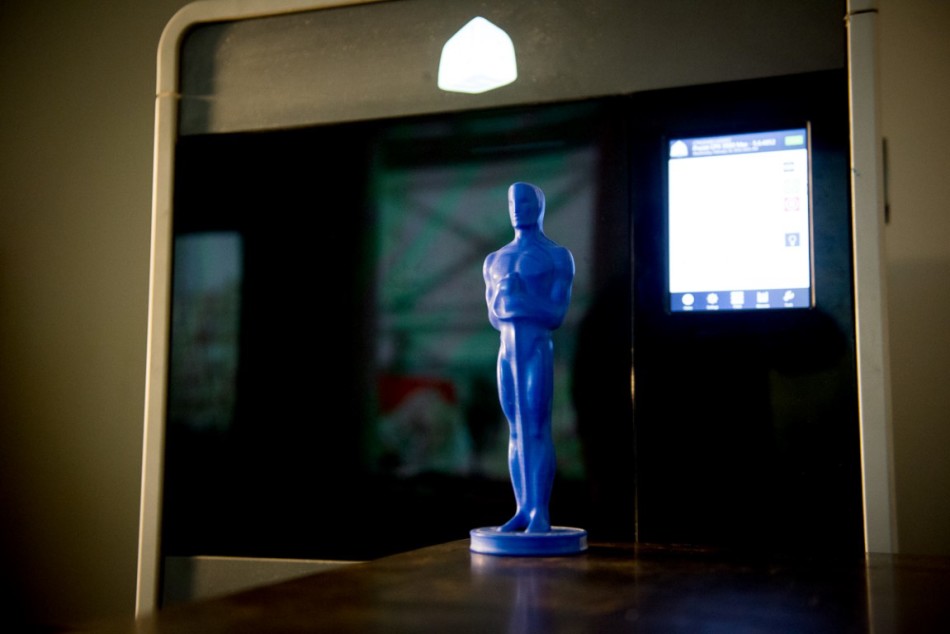
This wax model represents the new 3D printed face of the Oscars. Courtesy of Polich Tallix.
Latest News
February 19, 2016
The annual Academy Awards presentation ceremony is set to kick off on February 28. Celebrities from around the world will gather in their glittering best to receive honors (except Leo) that amount to the highest form of praise offered to the entertainment industry. Each winner will take home an Oscar, the famous statuette that has been the symbol of success since its introduction in 1928.
For the last 33 years, the Oscars have been manufactured in Chicago, cast in britannia metal before being gold-plated. Only viewers with the keenest of senses, or perhaps multiple awards winners, might have noticed the changes that have occurred to Oscar over the decades. As the result of repeated use, the mold used to produce the statuettes has begun to deteriorate, resulting in an Oscar whose features have begun to soften.
 This wax model represents the new 3D printed face of the Oscars. Courtesy of Polich Tallix.
This wax model represents the new 3D printed face of the Oscars. Courtesy of Polich Tallix.In 2015, the Academy sought to rectify the problem, and turned over both restoration and production of the statuette to Polich Tallix. The foundry, located in Rock Tavern, NY, devised a plan to ensure the transition was as smooth as possible. Rather than just creating a mold based off surviving Oscars from the 1930s, the company decided to combine the current face of Oscar with its older surviving cousins.
Polich Tallix began its work by creating 3D scans of both current and venerable Oscar statuettes. It then combined the two scans into a single digital whole, creating a composite that represents the two faces of Oscar. The digital design was fed into a 3D printer, which created a wax model.
The model was then used to create a mold for the newly updated Oscar. The production process starts by casting a wax statuette using the newly created mold, then dipping it repeatedly in a ceramic slurry to build up a shell. After curing, the shell is fired to remove the wax and harden the shell before molten bronze is poured into the shell. Once cooled, the resulting statuette is polished, then plated in 24 karat gold.
Total production time for 50 statuettes is about three months. Polich Tallix expressed its pleasure at being entrusted with creating the new Oscar.
“Polich Tallix has made many of such awards honoring all manners of accomplishment but never before,” says founder Dick Polich, “an object of such renowned and instant recognition.”
Below you’ll find a video about the 2016 Academy Award nominees.
Source: Polich Tallix
Subscribe to our FREE magazine, FREE email newsletters or both!
Latest News
About the Author
John NewmanJohn Newman is a Digital Engineering contributor who focuses on 3D printing. Contact him via [email protected] and read his posts on Rapid Ready Technology.
Follow DE





